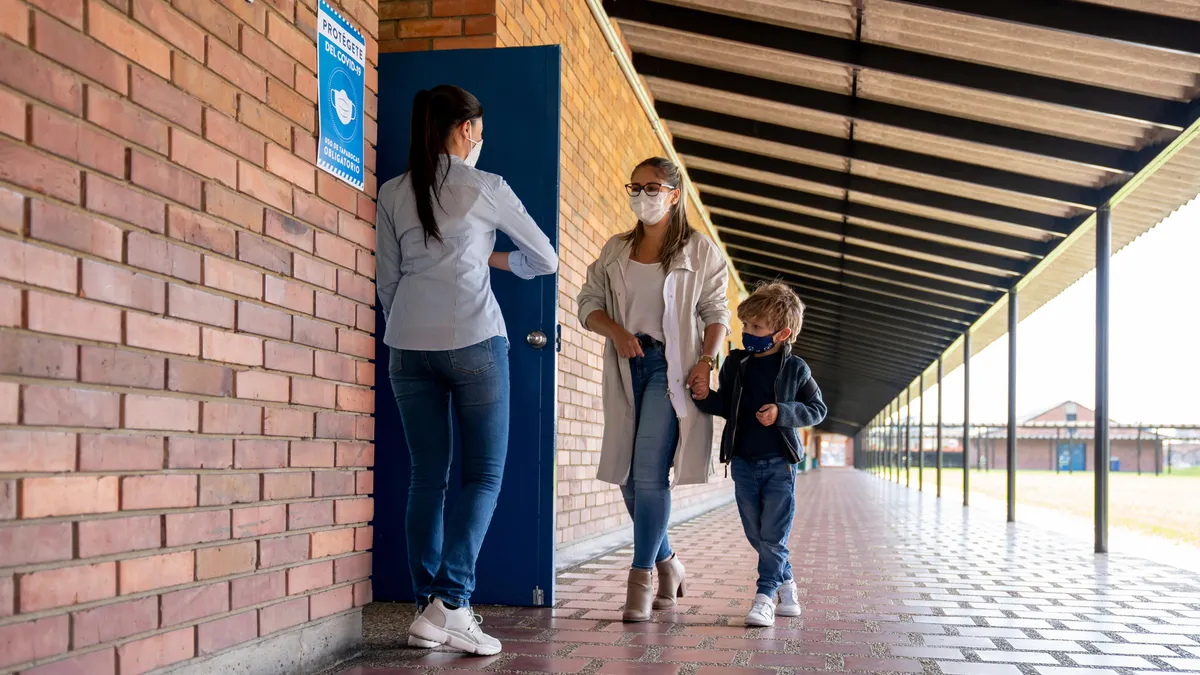Dive Brief:
- After examining legislative policies across 18 states, a new report found three emerging policy trends focusing on expanding school choice and flexible learning options, said report co-author Alex Spurrier, an associate partner at Bellwether Education Partners.
- The January report by Bellwether, a nonprofit centered around shifting education and life outcomes for underserved children, found states are pursuing policies to allow new and expanded private school choice programs and to provide more equitable access to options outside of a student’s assigned school.
- As some policymakers approach flexible learning policy options for the first time, it’s important state lawmakers address equity issues, too, Spurrier said.
Dive Insight:
In the third academic year impacted by COVID-19, lawmakers are exploring options for school choice and new educational opportunities at a faster rate than before as they respond to a massive shift in how parents are thinking about education choices for their children, Spurrier said.
States have passed new programs giving students access to more private school options by adopting broader student eligibility requirements for voucher and tax credit scholarships and increasing funding for existing private school choice programs, the report said.
Policymakers are also focusing on legislation to reduce administrative and transportation barriers to public schools, according to the Bellwether report.
For example, a Tennessee law passed in May requires local education agencies to hold a 30-day open enrollment period for students to enroll in any public school outside of their home school. The law also states districts must publicize and hold a lottery if needed for open enrollment. A West Virginia law passed in May, meanwhile, limits the reasons districts can deny open enrollment to a student.
But creating access to a wide range of educational opportunities can make things worse, said Jennifer Steele, an urban education reform expert and associate professor at American University’s School of Education in Washington, D.C..
“When we have parents having to fend for themselves in the education market and families having to fend for themselves when schools aren’t able to do it, inequality is magnified tremendously. It is dramatically exacerbated,” Steele said.
Traditional public schools, though not perfect, level the playing field, she said.
Yet some of the policies highlighted in the report don’t fall into the common full-time K-12 enrollment options of traditional public, private or charter schools, Spurrier said.
The report highlights ways states are working to lift learning opportunities that exist outside of a traditional school day, with proposed funding and support for more flexible options like learning pods and work-based learning.
In fact, a Louisiana law passed in June permits public schools to establish learning pods for small group instruction, the report said. Learning pods, sometimes referred to as micro-school, comprise a small group of students who share a learning space with a supervising adult.
“There’s a whole lot of gray in between,” Spurrier said. “I think there’s a lot that traditional districts can and are offering in terms of more flexible learning options.”
Steele also supported the report’s finding that state lawmakers are shifting focus to help districts integrate work-based learning programs into schools such as internships or apprenticeship programs.
“I think this idea that we need policy responses that help people prepare for this evolving workforce, I think that’s very compelling,” Steele said.
Moving forward, the report calls for increased access to information, transportation and student data as the key to ensuring these emerging policies have equitable foundations.











